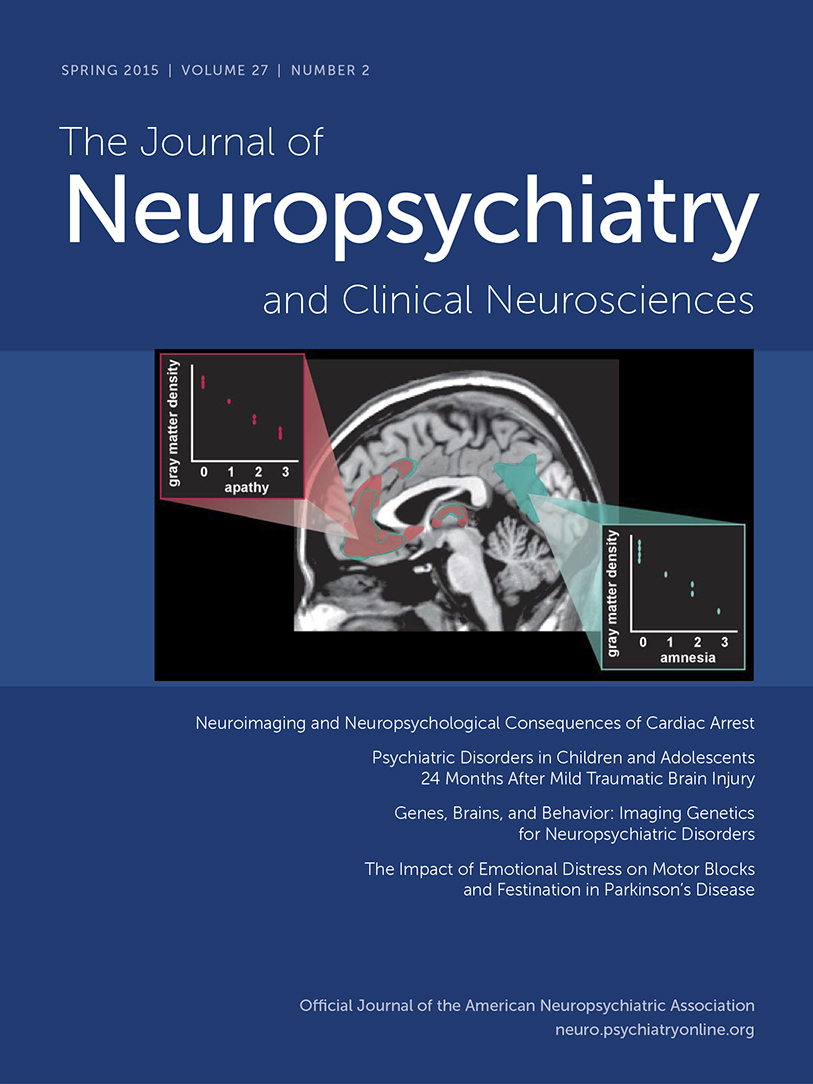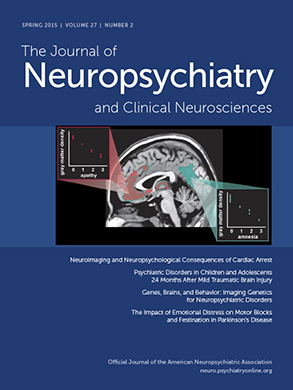Major depressive disorder (MDD) in adolescence is common and is often associated with substantial risks and impairments.
1 Studying the cognitive deficits in depressed adolescents is important for a better understanding of the pathophysiology and also for clinical practice. For example, improved knowledge of the early course of cognitive deficits in recently depressed adolescents may,
inter alia, inform the implementation of verbal therapies and development of rehabilitation programs and influence the advice that child and adolescent mental health professionals may provide to schools regarding the impact on school work.
Previous studies have evaluated cognitive deficits in adolescents with depression,
2–4 and some research has compared acutely depressed adolescents to adolescents whose depression has remitted.
5,6 However, there have been no studies that have longitudinally examined cognitive function in depressed adolescents. Based on recent findings,
5 we hypothesized that the cognitive deficits in depressed adolescents are state dependent and thus improve in those adolescents who improve clinically.
Methods
Subjects and Procedure
Thirteen recently depressed adolescents (nine girls) with a mean age of 15.5 years (range, 13–18 years) were recruited. They were part of a group of 20 acutely depressed teenagers who had been recently started on fluoxetine. After 2 months of fluoxetine therapy, the patients were evaluated by the treating psychiatrist as “much improved” or “very much improved” according to the Clinical Global Impression Improvement scale. Other measures used to assess depression found significant improvement from baseline assessment: Children’s Depression Rating Scale-Revised (35% improvement), the Beck Depression Inventory for youth ≥ 13 years (51% improvement), and suicidality as evaluated by the Suicide Ideation Questionnaire (30% improvement). Exclusion criteria included the following: psychosis, bipolar disorder, current substance abuse, mental retardation, a major neurological disorder, and patients who were judged to have not clinically improved. Twenty adolescents matched for age and gender constituted the control group. For both the depressed and control groups, two identical evaluations were performed (baseline and at 2 months). All participants and parents signed an informed consent form.
Cognitive Assessment
The Cambridge Neuropsychological Test Automated Battery is a reliable and extensively validated computerized battery, sensitive to cognitive changes caused by a wide range of central nervous system disorders and medication effects.
7,8 The following tests were chosen on the basis of their sensitivity to altered cognitive function in depression: psychomotor speed: Motor Task; sustained attention: Rapid Visual Processing; visual-spatial attention: Match to Sample Visual Search; visual memory and learning: Paired Associates Learning; cognitive planning: Stockings of Cambridge (SOC); and working memory: Spatial Working Memory and Spatial Span.
Emotional Reactivity
The International Affective Picture System was used for the evaluation of emotional reactivity. “Emotional reactivity” denotes the characteristics of emotional responding and includes the extent of emotional response, intensity of various components of the response, and threshold of stimuli needed to generate a response.
9 The International Affective Picture System is a reliable and valid instrument that uses a series of emotional, normative, and internationally accessible pictorial stimuli. Based on previous studies of depressed patients,
10 we used 40 pictures that tapped either positive or negative valence on a scale of 1 (extremely sad) to 10 (extremely happy).
Data Analyses
We used repeated-measure analysis of variance with a between-subjects factor of group (healthy controls/recently depressed patients) and a within-subject factor of time (baseline and after 2 months). Further analysis to evaluate the interaction was conducted with a paired sample t test. SPSS (version 17, SPSS, Chicago) was used for statistical analysis.
Results
Of the four cognitive domains that were impaired at baseline in depressed adolescents compared with matched control subjects, only attention showed significant and reliable improvement. This improvement could not be explained by a training effect, as shown by the group × time interaction (
Table 1). There was a significant interaction with the parameters of attention (Rapid Visual Processing A', p=0.046; Match to Sample Visual Search mean correct latency, p=0.046). The depressed group’s scores improved significantly after their levels of depression decreased (Rapid Visual Processing A', t
(11)=−3.67, p=0.004; Match to Sample Visual Search mean correct latency, t
(12)=4.09, p=0.001).
The group × time interaction for the test of visual memory did not reach a level of significance (Paired Associates Learning total errors adjusted, p=0.052), and the results differed among the various functions in the tests of executive function. Nevertheless, an interaction was found in planning, as demonstrated by the SOC scores (SOC numbers of problems solved in minimum moves, p=0.049; SOC initial thinking time, p=0.018; SOC subsequent thinking time did not reach a level of significance, p=0.084). Further analysis of the interaction showed that the control group now performed less efficiently (SOC numbers of problems solved in minimum moves, t(18)=2.39, p=0.03) and took less time in planning (SOC initial thinking time, t(18)=3.00 p=0.008), but there was no change in the time taken to finish the task after the initial move (SOC subsequent thinking time, t(18)=0.271 p=0.79). No significant differences were found in the depressed group (SOC numbers of problems solved in minimum moves, t(12)=−0.79, p=0.45; SOC initial thinking time, t(12)=−0.59, p=0.56; SOC subsequent thinking time, t(12)=1.97, p=0.072).
There was no significant group × time interaction in working memory (Spatial Working Memory between errors, p=0.48), and the interaction in the SSP scores showed a tendency toward deterioration (Spatial Span span length p=0.079). For the Spatial Span scores, the control group improved significantly (Spatial Span span length, t(18)=−2.14, p=0.047), and there was no significant change in the depressed group (Spatial Span span length, t(13)=0.56, p=0.58).
There was a significant improvement in emotional reactivity, as shown by a significant group × time interaction for measures of emotional reactivity both for positive stimuli (p=0.002) and for negative stimuli (p=0.007) .The depressed group found the positive stimuli significantly more positive than previously (t(12)=−2.22, p=0.046). The negative stimuli scores of the control group were now judged as more negative (t(18)=−4.71, p=0.000).
Discussion
The central finding of the study is that early in the course of the clinical improvement of depressive illness in adolescents, attention and emotional reactivity improve. Working memory does not.
The study protocol enhances the reliability of these findings. First, unlike previous studies that compared acutely depressed adolescents to remitters and controls, this is the first longitudinal study to evaluate cognitive functions and emotional reactivity in the same patient group. Second, to rule out the possibility of practice effects as a confounder, patients were compared with matched healthy control subjects who underwent two similar evaluations.
There is a current debate of whether cognitive deficits in depressed patients are trait dependent or state dependent. In the literature on depressed adults, there are studies that support cognitive deficits as a trait marker for depression.
11–13 For example, there is a longitudinal adult twin study that shows cognitive deficits before the evolution of depressive symptoms.
14 Further, in a recent large cohort study, deficits in attention and working memory were predictive of affective difficulties in female adolescents but not in male adolescents.
15 The finding that some cognitive domains such as working memory did not improve with improvement in depression is consistent with the possibility that this deficit is not state dependent.
Studies that have compared acutely depressed adolescents to remitters and to nondepressed controls
5 support the trait hypothesis. The finding of improved attention after clinical improvement is in accordance with the state hypothesis.
Perhaps part of the state versus trait debate will be clarified by separating deficits in attention from executive function. The findings also suggest the need to consider depression-related cognitive deficits in adolescent separately from adults.
The course of neurocognitive deficits has wide clinical relevance. For example, some depressed adolescents with cognitive impairment might be misdiagnosed in the acute illness episode as suffering from attention deficit hyperactivity disorder. Repeating the evaluation when the depression improves may potentially clarify this diagnostic difficulty. It is also salient to remember, when planning a rehabilitation program for a depressed adolescent, that although attention and emotional reactivity, especially to positive stimuli, are likely to improve with clinical improvement, other cognitive functions may not, at least in the short term.
The study is not without limitations: small sample size, subject derivation from a single center, and the single, short-term follow-up evaluation. Addressing these issues in future research would strengthen our findings.

